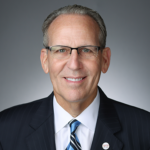Stand Up for the Whole Child
Topics: Health and Wellness, Student Engagement

The whole child approach to education in schools is transformative. This comprehensive philosophy is a fundamental shift in how we view and nurture students’ potential—and one that gained steam quickly in the aftermath of the COVID-19 pandemic.
In NAESP’s Leaders We Need Now research report, we talked to school leaders about the sudden shifts schools experienced at the height of the pandemic. Leaders shared that schools had to pivot to address social-emotional well-being, mental health, and basic necessities more than ever before.
A Holistic Education
The whole child model is a timely solution to address these issues. Many policies and strategies are already working in schools across the U.S. Of those success stories, we’re seeing six integrated strategies emerge:
- Essential support roles;
- Universal school meals;
- Physically and emotionally safe learning environments;
- Student and family engagement;
- Comprehensive education; and
- Multiple measures of achievement.
I invite you to dive deeper into these strategies in “Build Supports for the Whole Child” (page 16) by David Griffith, NAESP’s associate executive director of policy and advocacy.
NAESP’s Unwavering Commitment
At NAESP, we’ve long advocated for a comprehensive educational philosophy that extends beyond traditional academics. We believe that:
- Play-based learning is crucial for cognitive, social, and emotional development at all ages;
- Social-emotional learning is vital as children grow and in the future;
- From pre-K through elementary school, the middle level, and beyond, schools must ensure seamless education transitions for students;
- A well-rounded education includes exposure to, and participation in, the arts; and
- Wraparound services have a positive impact on student achievement, social interaction, and safety.
The Role of School Leaders
As school leaders, you are uniquely positioned to champion the whole child approach. Here’s how you can make a difference:
- Use your voice to promote policies and practices that support holistic education;
- Collaborate with community organizations, health care providers, and families to address all aspects of a child’s well-being; and
- Ensure your staff is equipped with professional learning to support students’ diverse needs.
NAESP’s Promise
As we navigate this shift in education, NAESP is committed to providing resources, professional learning, and advocacy tools to help you implement a whole child approach in your schools. We will continue to be a voice for holistic education at the national level—and we’re counting on you to be that voice at the local and state levels.
Together, we can create learning environments in which every child thrives in every dimension of their being. NAESP is here to support you every step of the way in this vital endeavor.
L. Earl Franks, Ed.D., CAE, is executive director of the National Association of Elementary School Principals.

